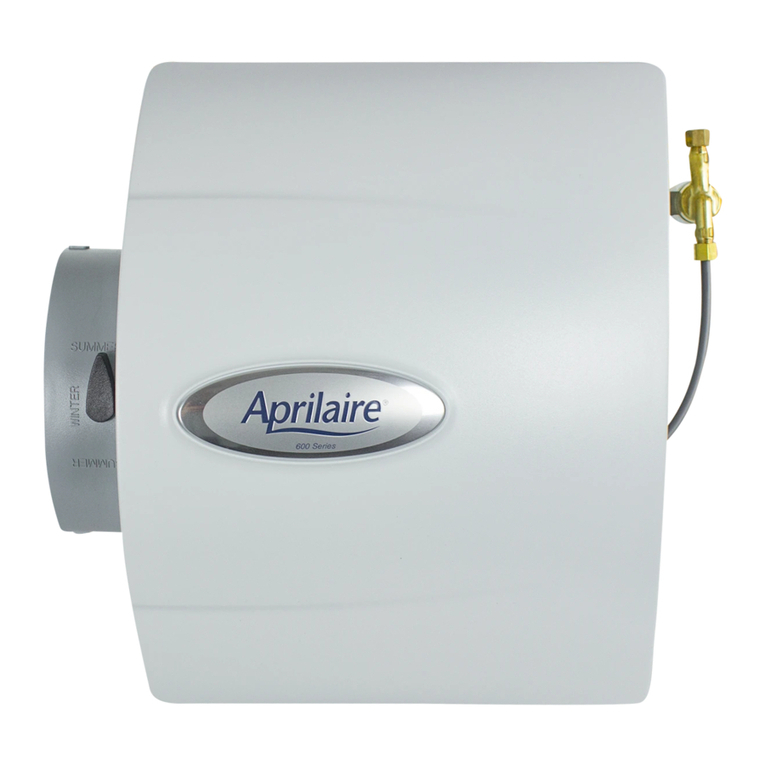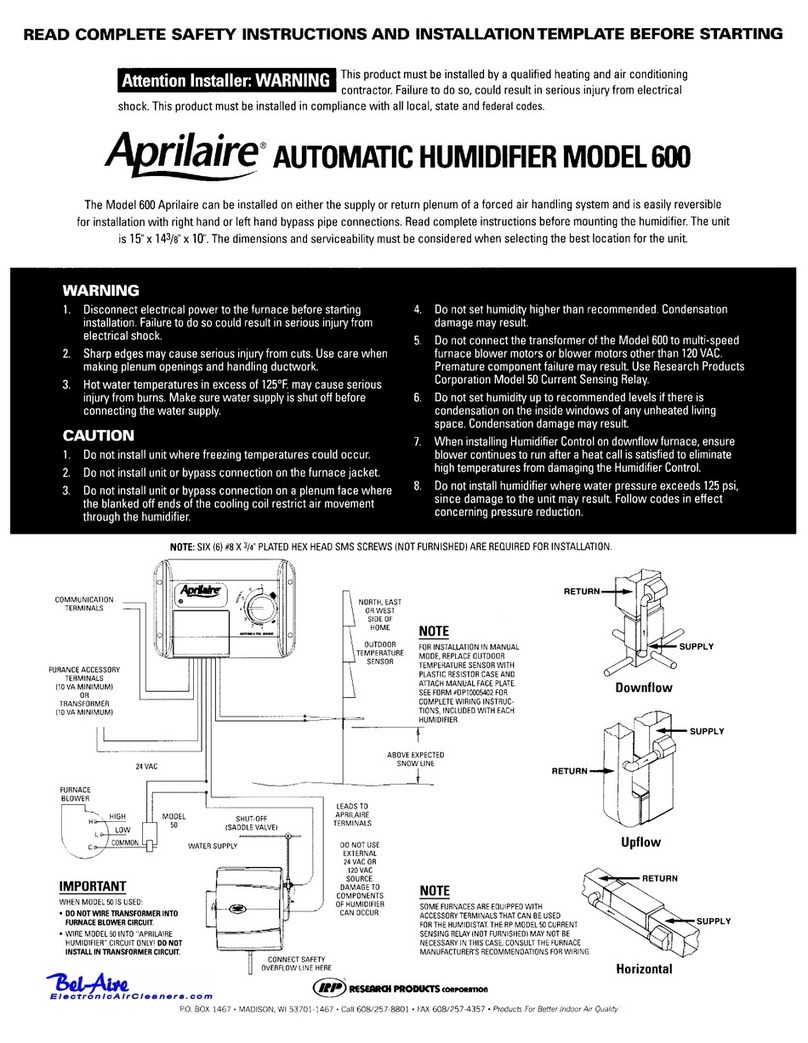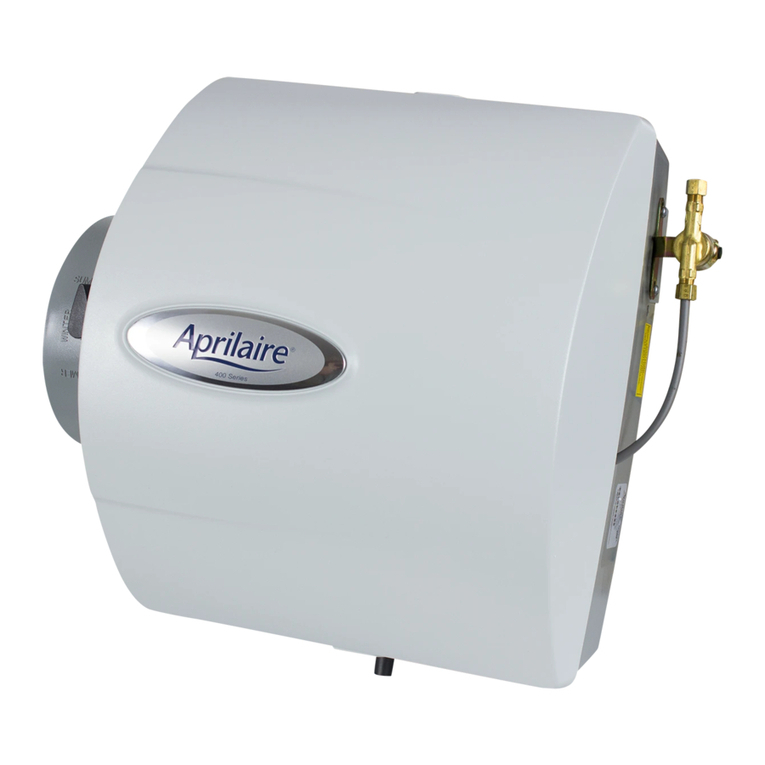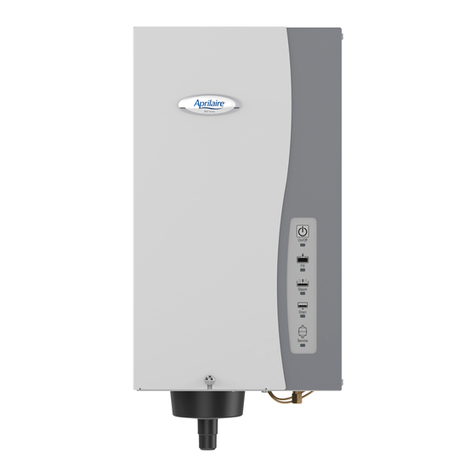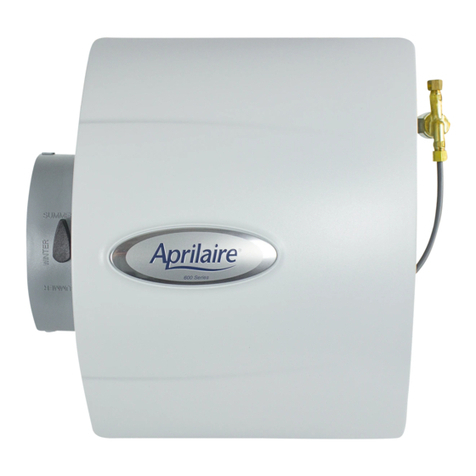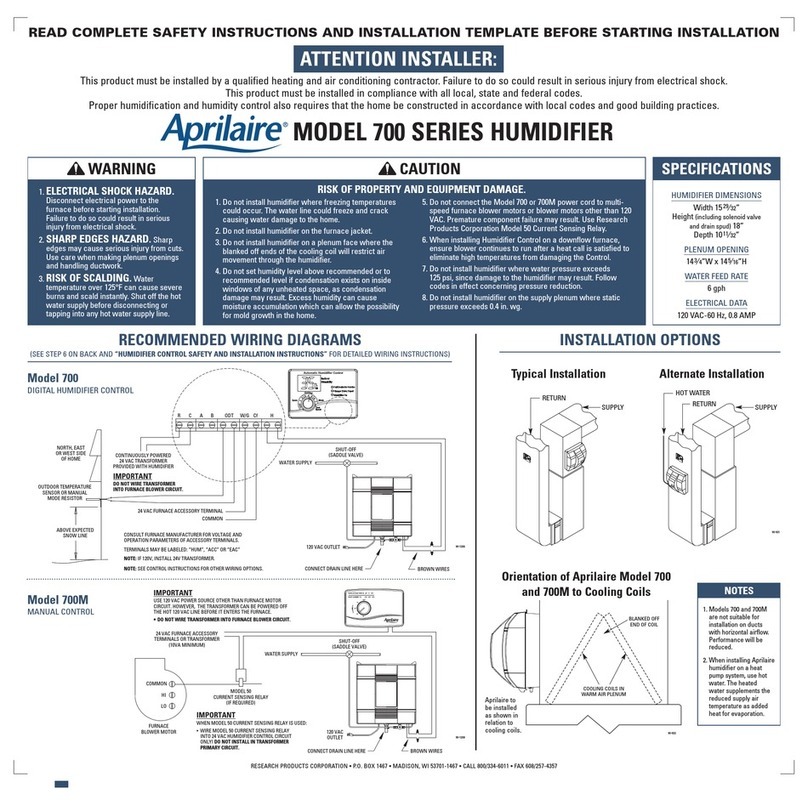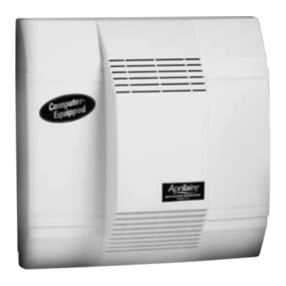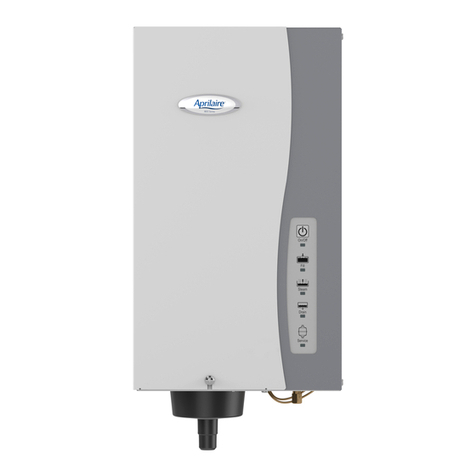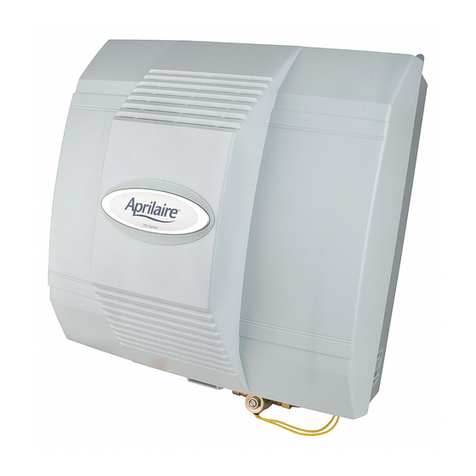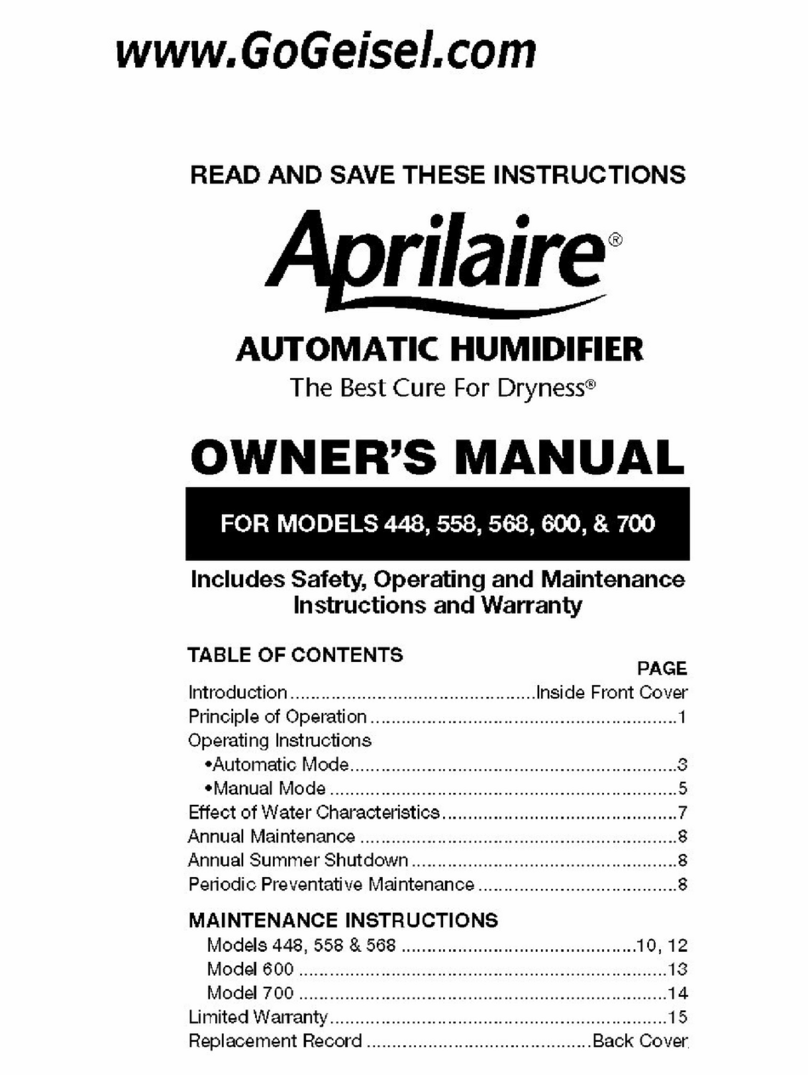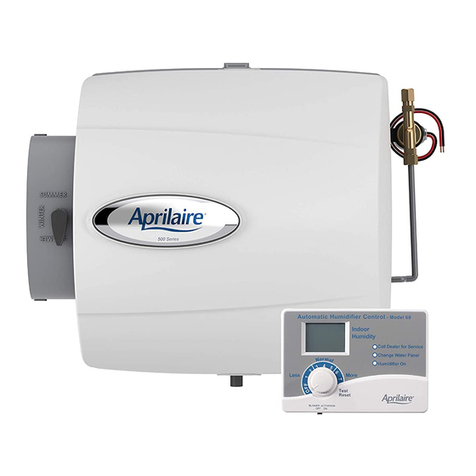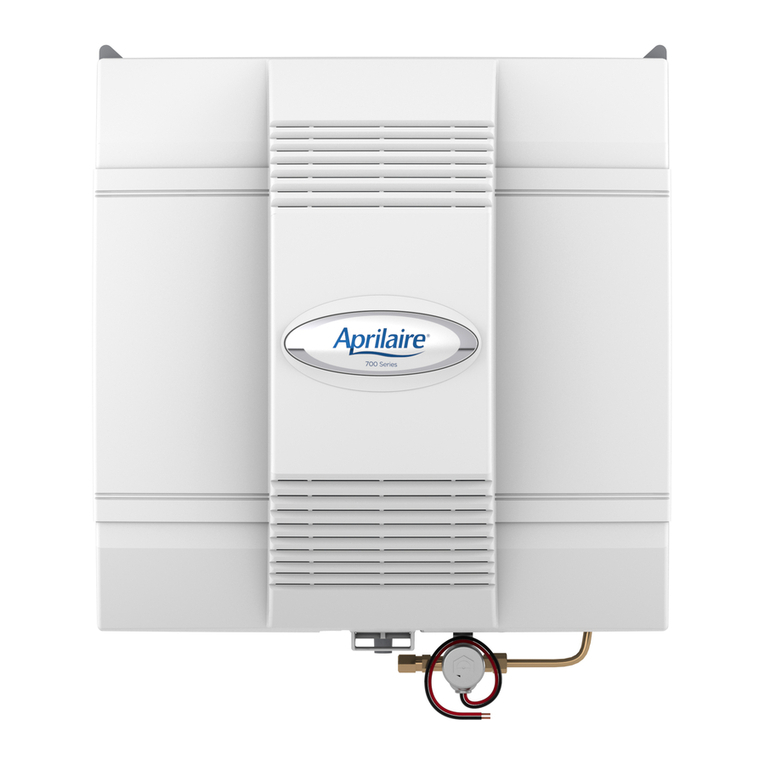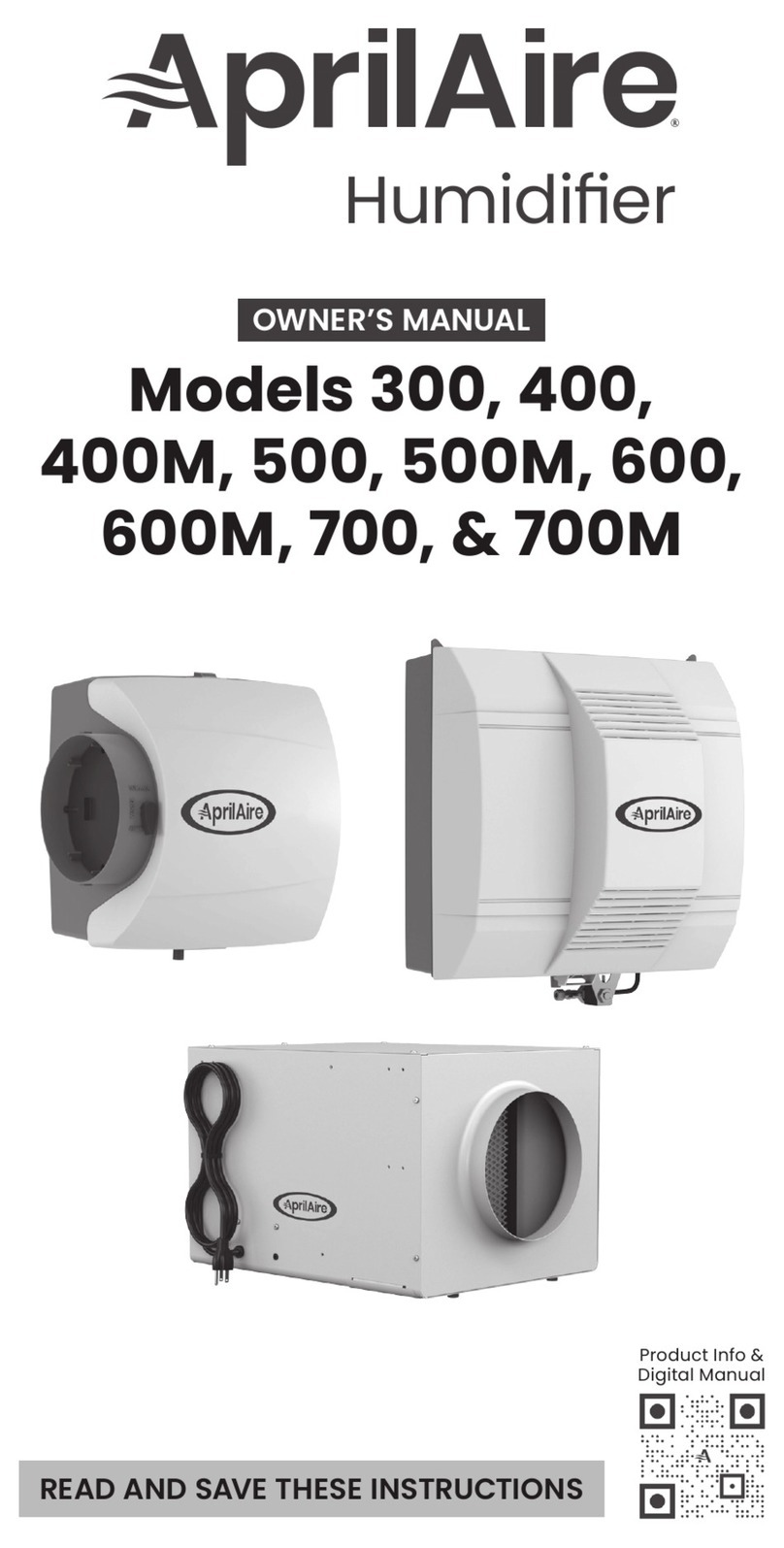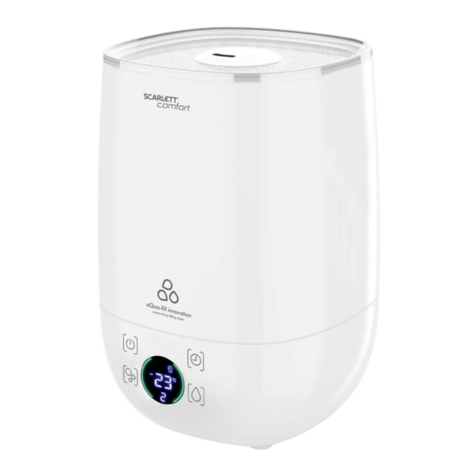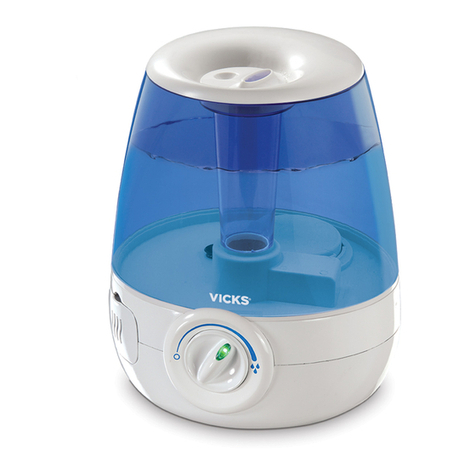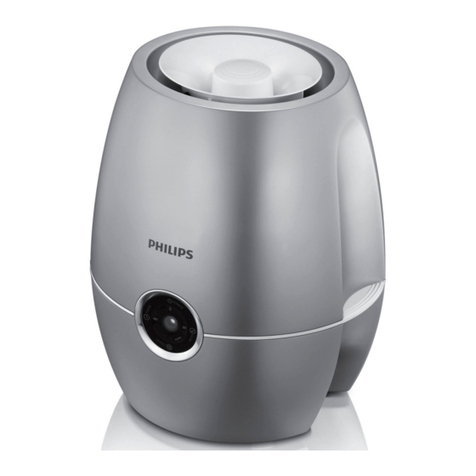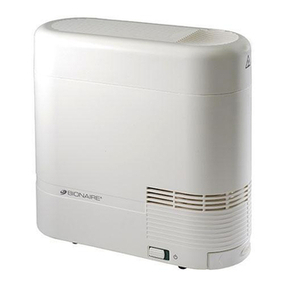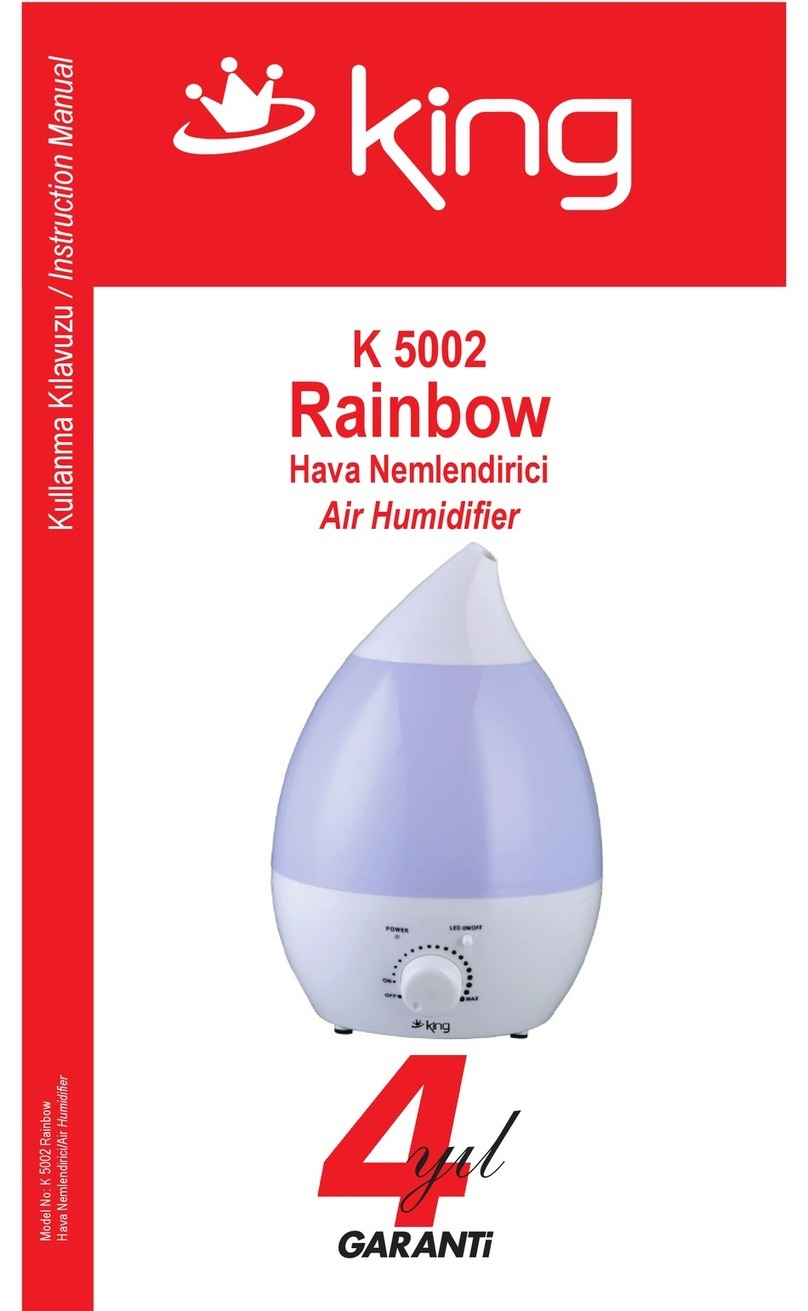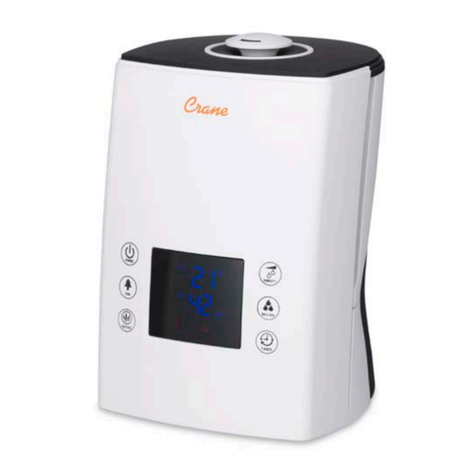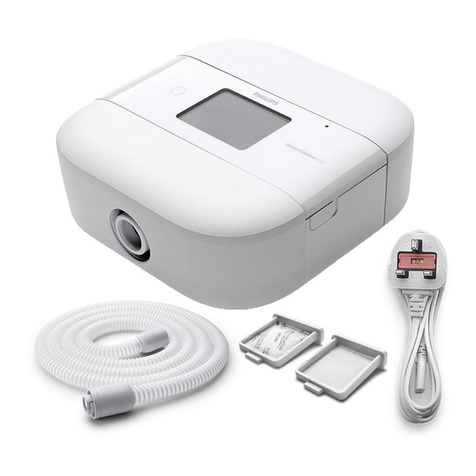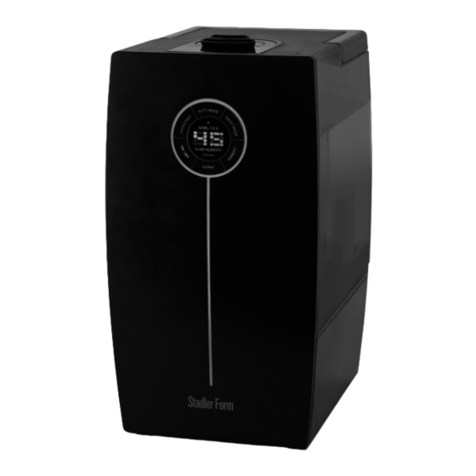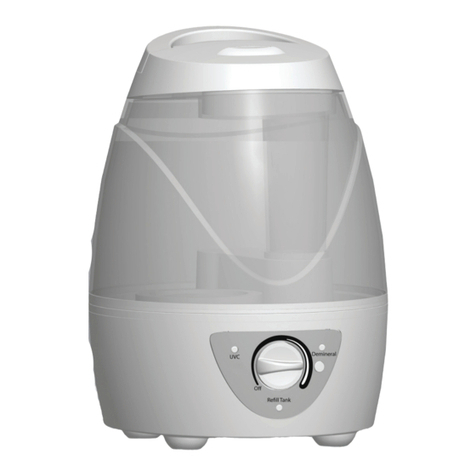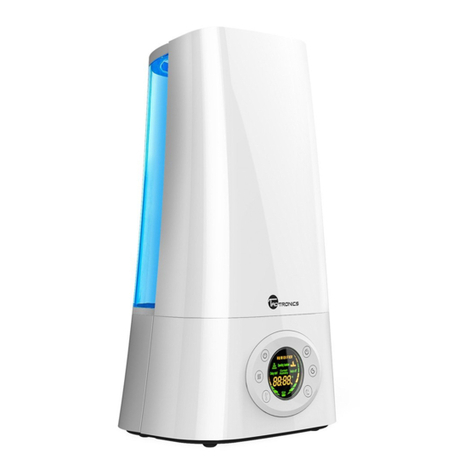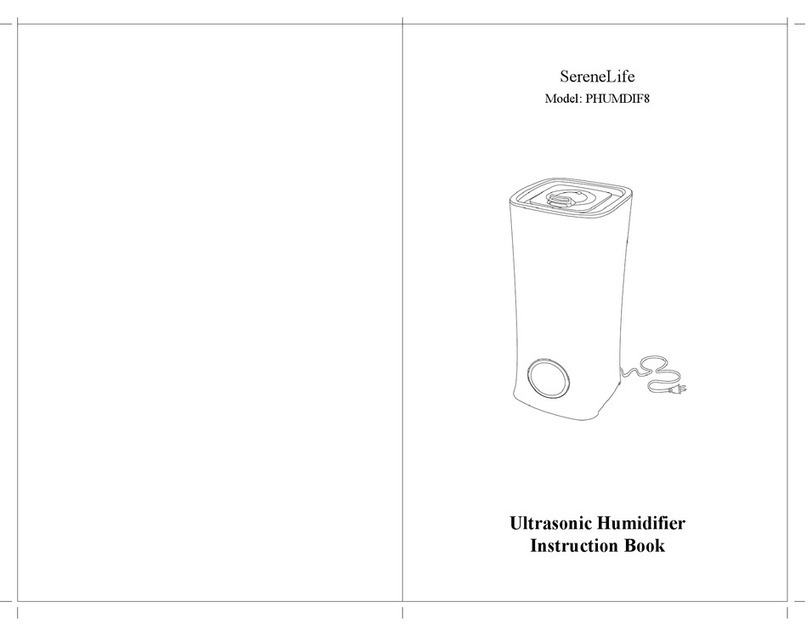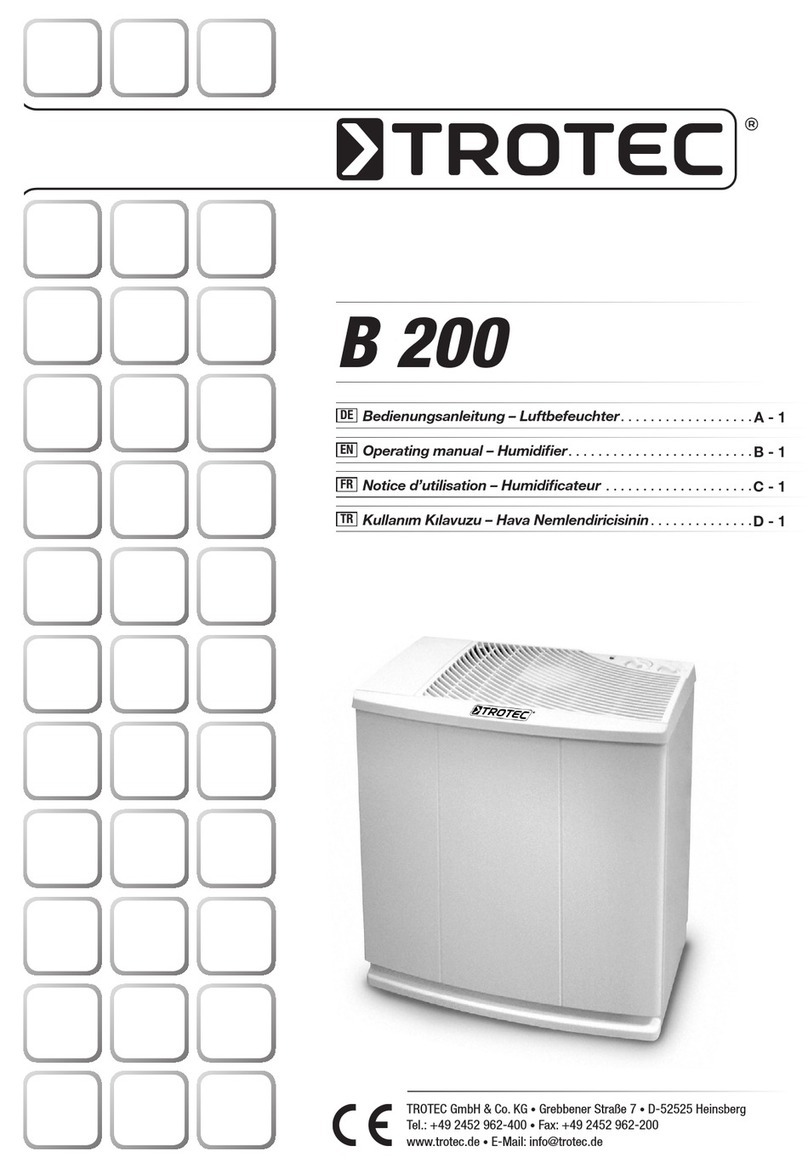
B2210092A • 10016604 • 09.22
© 2022 AprilAire | aprilaire.com | 800.334.6011
AprilAire reserves the right to change specications without notice.
90-1522
FIGURE 4: FILL & DRAIN
SYSTEM AND CANISTER
Steam
Outlet
Drain
Supply
Water
Drain Cup
Drain Valve
Electrodes
Water Level Probe
Fill Valve
Overflow
Fill
Steam Hose
Dispersion
Tube in
Duct
Tubelets
Canister
Drain
Assembly
5. Slide canister up and out of drain assembly (see FIGURE 4).
Discard old canister.
6. Remove O-ring from drain assembly using small
screwdriver. Discard old O-ring.
7. With your nger, swirl the uid/precipitate mixture in the
bottom of the drain valve reservoir (see FIGURE 4).
8. Using a sponge or paper towels, soak up the water in the
reservoir. If necessary, use a wet/dry vacuum to remove
residue.
9. Clean the inside of the drain port (where coil projects out)
by gently swabbing with a bent cotton swab or other soft
implement.
10. Rinse the drain valve reservoir with clean water and vacuum
as necessary.
11. Insert new O-ring (Part #5258) into slot in drain assembly.
Dampen O-ring with water before inserting canister. Do not
use oil, grease, or any lubricant besides water.
12. Make sure strainer is inserted into bottom of new canister.
13. Insert new canister into drain assembly (see FIGURE 4).
14. Slip steam hose over top of canister and tighten hose lamp
(see FIGURE 4).
15. Reconnect the electrode wires and water level probe wire to
the posts on top of the canister (see Figure 2A and Figure
2B). Electrode wires are interchangeable and can be placed
on either of the two electrode posts on top of the canister.
Ensure connectors are fully seated.
ELECTRODE WIRE REPLACEMENT
1. Remove front panel (see FIGURE 1).
2. Remove side panel (see FIGURE 1).
3. Remove the electrode wires (see FIGURE 2A and FIGURE 2B).
a. For units with one circuit board: Use needle nose pliers
to pull the spade connectors off spade terminals J8 and
J10 on the circuit board.
b. For units with two circuit boards: Use needle nose pliers
to pull the spade connectors off the spade terminals on
the power relay.
4. Ensure the two replacement electrode wires (Part #4978)
have “O” shape connectors (see FIGURE 3B). Do not use
replacement wires with “D” shape connectors (see FIGURE
3A).
5. Attach the new electrode wires (see FIGURE 2A and FIGURE
2B).
a. For units with one circuit board: Use a pair of needle
nose pliers to attach the spade connectors to the spade
terminals J8 and J10 on the circuit board. Electrode wires
are interchangeable and can be placed on either of the
two terminals.
b. For units with two circuit boards: Use a pair of needle
nose pliers to attach the connectors to the spade
terminals on the power relay. One wire, either one but
not both, must go through current-sensing toroid (see
FIGURE 2A). Electrode wires are interchangeable and can
be placed on either of the two terminals.
FILL VALVE SERVICE
1. Disconnect water supply line from ll valve inlet (see
FIGURE 4).
2. Remove in-line strainer from the ll valve inlet port using
a #8 or #10 sheet metal or wood screw with a minimum
length of 0.5”.
3. Clean or replace in-line strainer (Part #4004).
4. Reconnect water supply line to ll valve inlet (see Figure 4).
RESTORE UNIT TO SERVICE
1. Replace side panel if removed (see FIGURE 1).
2. Replace front panel (see FIGURE 1).
3. Inspect drain hose to make sure it is not blocked and has
constant downward slope. Clean or replace if necessary.
4. Inspect and clean condensate pump (if used).
5. Inspect steam hose to make sure it has no low spots and
has constant upward slope from humidier to dispersion
tube in duct. If dispersion tube is mounted below humidier,
inspect drip tee and drain trap.
6. Restore main electrical power to humidier at circuit
breaker.
7. Turn humidier on and verify green On/Off light is
illuminated (see FIGURE 1).
8. Check system operation and inspect all plumbing
connections and piping for signs of cracks or leaks.
